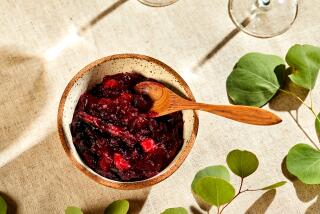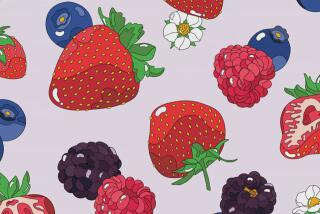Humble Cranberry a Big Dollar Industry
CARVER, Mass. — Jack Angley stretches back in his easy chair and tries to catch some shut-eye. It’s going to be a long night. Any minute now he expects to be jolted awake by an alarm. Angley is not a physician on call or an expectant father, but he wears the haggard expression of both. He’s a cranberry farmer and tonight he’s expecting frost.
Angley is one of nearly 500 cranberry growers in Massachusetts. For the Bay States, the commonplace cranberry is big business. Last year’s crop was valued at nearly $100 million. Cranberry bogs are some of the most expensive farmland in the United States and Massachusetts produces nearly 50% of all the cranberries grown in this country.
If your image of the cranberry harvest consists of a rugged outdoorsman scooping berries by hand, it’s time to look again. Cranberry growers use an arsenal of sophisticated equipment, including computerized monitoring devices, like the “chatter box,” that warns Angley to turn on a sprinkler system when the temperature in the bogs gets too low, and even helicopters for transporting the harvested berries.
The cranberry is one of few fruits native to North America. The Indians ate the berries raw and pounded them with fat and dried venison to make a ration called pemmican. The berry was given its name by the early European settlers. The cranberry’s slender, cone-shaped blossom reminded them of the beak of a crane, whence the term “crane berry,” which eventually was shortened to cranberry. Cranberries were also called bounce berries, because a ripe berry, when dropped, will bounce.
Cranberries are gathered by one of two methods: dry harvesting and wet harvesting. In the first, the berries are combed off the vine with a machine that looks like an oversized lawnmower. In wet harvesting, the bogs are flooded with several feet of water. The berries are knocked off the vines with a water reel, a machine that looks like an egg beater laid on its side. The hollow cranberries float, transforming the bogs into crimson seas that rival the splendor of fall foliage.
Workers corral the berries with floating wooden booms and haul them to the shore, where a giant vacuum cleaner sucks them into a machine called a de-chaffer. Twice a day, the silence of the bogs is shattered by the roar of helicopters that haul bins of freshly picked cranberries to waiting trucks.
At the packing house, the cranberries are graded according to size, color and quality. Each individual berry is subjected to a “bounce test.” The berries are dropped down a chute with a series of four-inch high barriers. Any that fail to clear the barriers after seven tries are considered unripe and are discarded.
It takes 45,000 individual cranberries to fill a barrel, the standard measure. One acre of bog yields 150 barrels of berries. There are more than 11,000 acres of cranberry bogs under cultivation in the state of Massachusetts. Last year, the cranberry growers cooperative, Ocean Spray, processed some three million barrels of cranberries, producing thousands of tons of sauce and jelly and millions of gallons of juice.
The Colonists thought highly enough of the tart red berry to send 10 full barrels to King Charles II in 1677. They used the astringent berry to make a sauce for mutton and venison. But it wasn’t until the late 18th Century that cranberries became widely accepted, thanks to the increased availability of sugar from the West Indies.
Rich in Vitamin C, cranberries proved to be an ideal remedy for scurvy. Their absence aboard the Pequod alarmed at least one sailor in Melville’s “Moby Dick”: “Go out with the crazy Captain Ahab? Never. He flat refused to take cranberries aboard. A man could get scurvy, or worse, whaling with the likes of him!”
Melville was right: cranberries are an excellent source of Vitamin C and iodine. The crimson berry also contains vitamins A and B complex, and beneficial traces of quinine and benzoic acid.
The cranberry season starts in late September and continues through early November. As the season advances, the berries become darker. Due to their high acidity, cranberries keep well (up to 10 days in the refrigerator) and can be frozen almost indefinitely.
More to Read
Inside the business of entertainment
The Wide Shot brings you news, analysis and insights on everything from streaming wars to production — and what it all means for the future.
You may occasionally receive promotional content from the Los Angeles Times.










